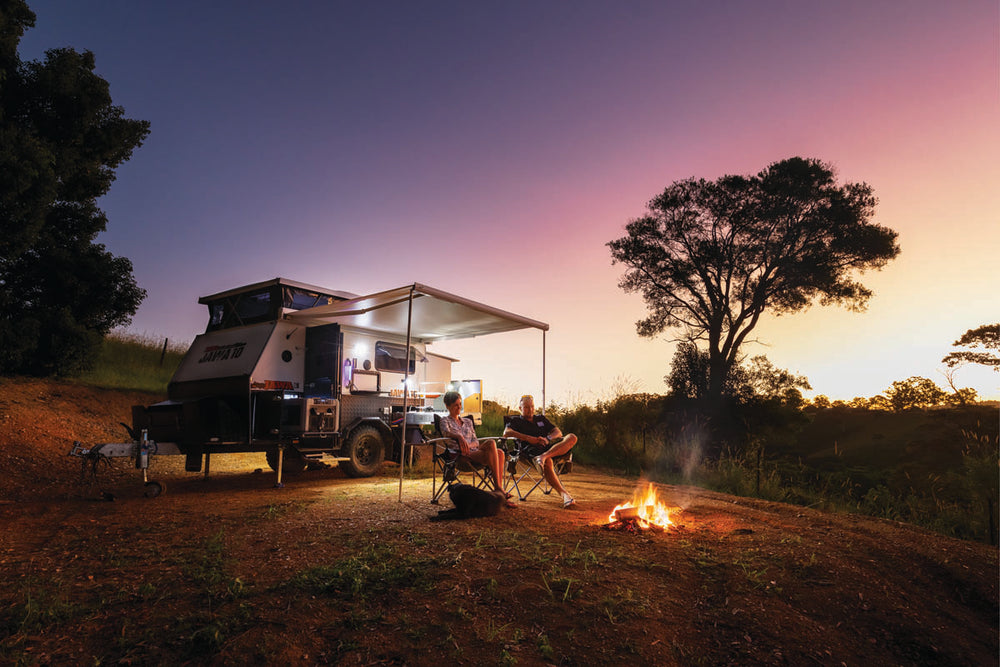

In this article 12V Guru answers a reader’s question about upgrading their BMPRO system and if they can pair it with products from other brands.
Hey 12V Guru,
I am looking to upgrade our current BMPRO system with more solar. We currently have the BMPRO MiniBoost which helps charge for the car really well, but we need more power for when we stay camped for several days and are not driving. Is it better to stay with BMPRO products or would one of the other brands (such as a Victron) larger 50A MPPT charge controller be better for the solar only and leave the BMPRO MiniBoost just for the AUX? Any tips would be appreciated.
Kind regards,
Joshua Arden
Hi Joshua,
Great question considering how many 12V upgrades we are seeing being undertaken at not only a DIY level but also with the RV dealerships. With more and more electrical offerings in the ever-evolving world of recreational vehicles, upgrading your 12V DC electrical system can seem like a straightforward way to enhance your RV’s autonomy and efficiency. Whether it’s by adding more solar panels, integrating advanced solar regulators or incorporating auxiliary chargers, these enhancements promise a better off-grid experience. However, many adventurers encounter stumbling blocks after mixing component brands, leading to compatibility issues that diminish the system’s overall effectiveness.
Understanding the root causes of these compatibility issues is crucial for any RV owner looking to upgrade their 12V system. Based on consumer feedback that we see through Australian dealers and our customer support team we have outlined the primary reasons why mixing brands can lead to underperformance or even system failure, along with additional considerations to keep in mind.
Incompatible internal components
Different brands will almost always use distinct internal componentry in their devices, which can lead to electrical mismatches. This is due to the design practices and alignment with various component suppliers. For instance, different components such as relay, memory, metal oxide semiconductor field-effect transistors (MOSFETs), sensors and importantly the integrated circuits (ICs or commonly known as a computer chip) all have different key elements and tolerances why may not align, causing inefficiencies or potential damage when these components are forced to work together. In many cases the RV owner may not even recognise there is an issue but just experience dissatisfaction or frustration with the below average outcome.
Proprietary software algorithms
All 12V systems are equipped with proprietary software designed to optimise their performance. Sometimes this will be seen as different screens, functionality and performance. However, when products from different manufacturers are used together, these software algorithms may not communicate effectively, leading to a reduction in the system’s overall efficiency. For example, battery chargers all have little tweaks in their proprietary software such as reset periods, timeouts and sensing time windows and if these are not compatible one unit will take over and the other will enter a fault or timeout mode until rectified.
Varying ages and technology levels
Technological advancements are rapid; yesterday’s cutting-edge device might not mesh well with today’s tech. Older models may not only lack the efficiency of newer ones but might also use outdated technology that doesn’t sync well with recent products. This discrepancy can lead to significant performance drops, especially if a new high-efficiency solar panel is connected to an outdated regulator. We all see the rapid changes in technology year as ICs and other components become faster and more efficient.
Different communication protocols
Another less obvious issue is the varying communication protocols used by different manufacturers. Many have their own communications system (such as CAN Bus — there are six different ones in Australia) which will lead to devices not being able to communicate with each other.
Warranty and technical support challenges
Finally, mixing brands can complicate warranty claims and tech support. Manufacturers might not cover defects or issues arising from the use of their products alongside other brands. This can leave owners without support when they need it most, potentially leading to costly repairs or replacements that could have been avoided with a unified system.
Final advice
To maximise the benefits of upgrading your RV’s 12V DC electrical system, consider sticking to one brand for all related components. This ensures that all parts are designed to work together, both mechanically and electronically, reducing the risk of compatibility issues. If you prefer to mix brands, it’s advisable to consult with a professional installer who can verify the compatibility of all components before installation.
Remember, a well-integrated system not only performs better but also offers greater peace of mind, letting you focus on enjoying the adventure.
Safe travels!
12V Guru
THE NEXT STEP
If you want to learn the latest caravan news, find the most innovative new caravans and camping gear or get inspired to plan your next adventure off the beaten track, subscribe to our weekly newsletter. We promise to send you only the best content.
Related articles:
12V Guru: Pre-trip caravan safety checks of the van's electrics
12V Guru: Using a shunt to get accurate battery readings







